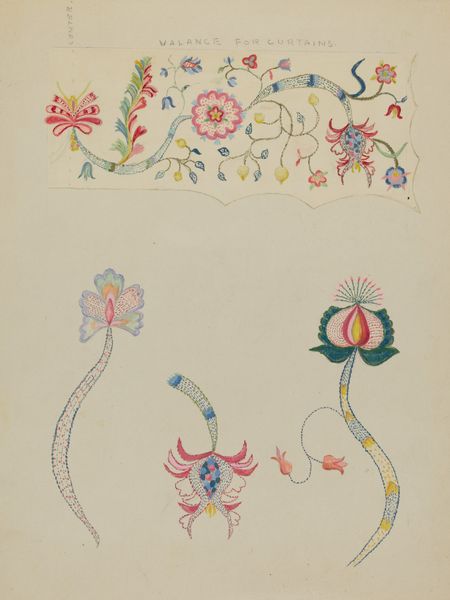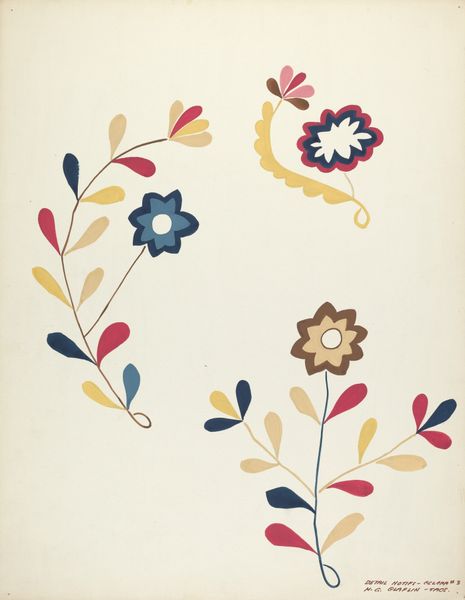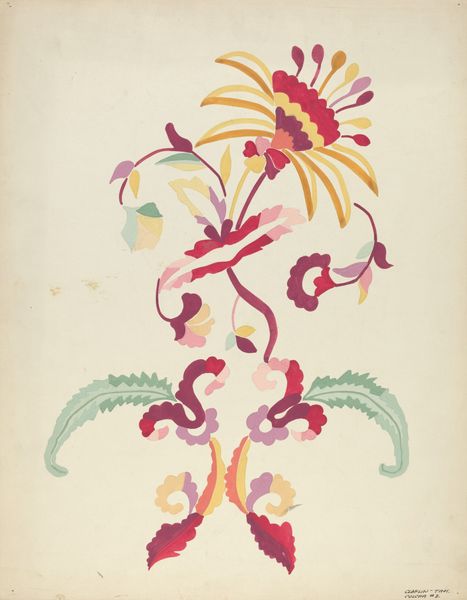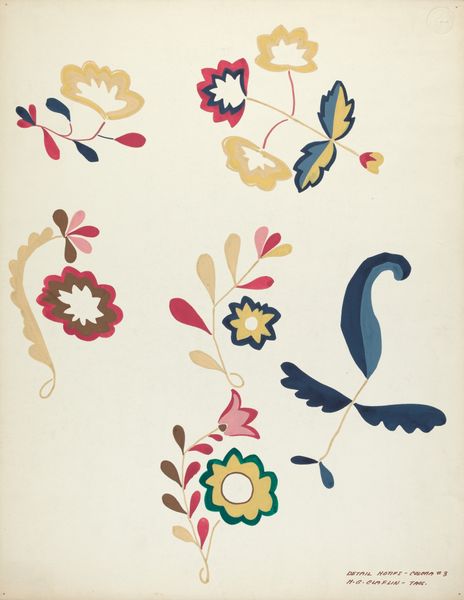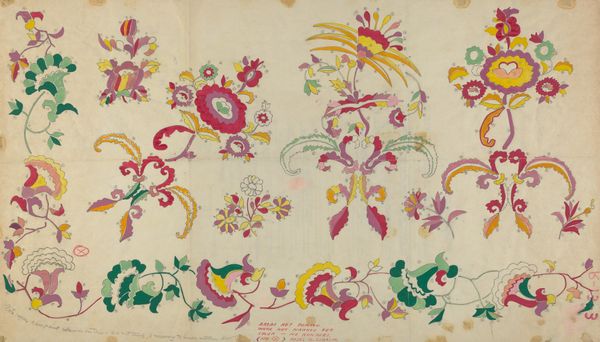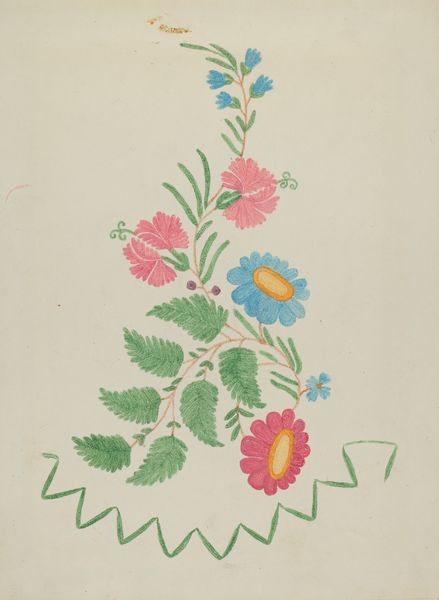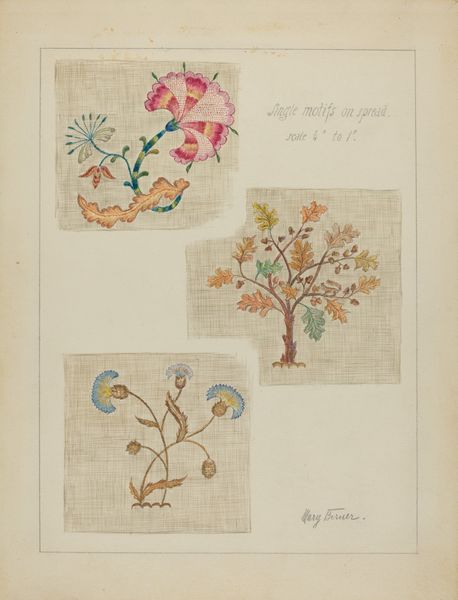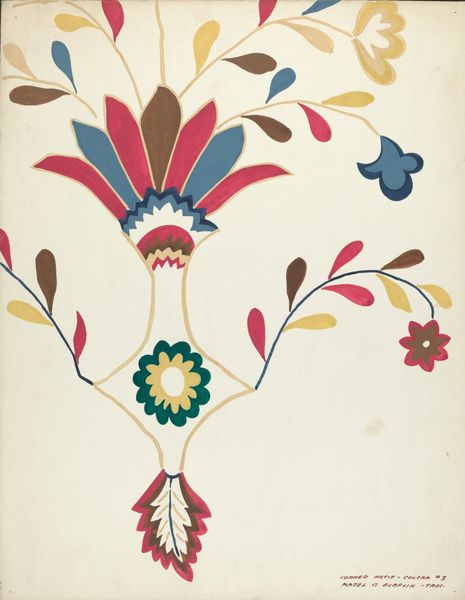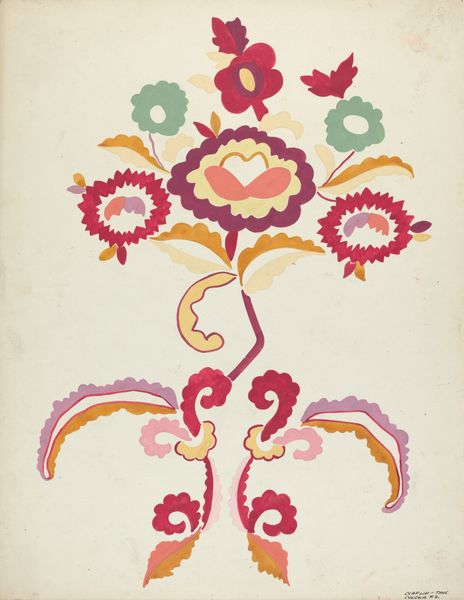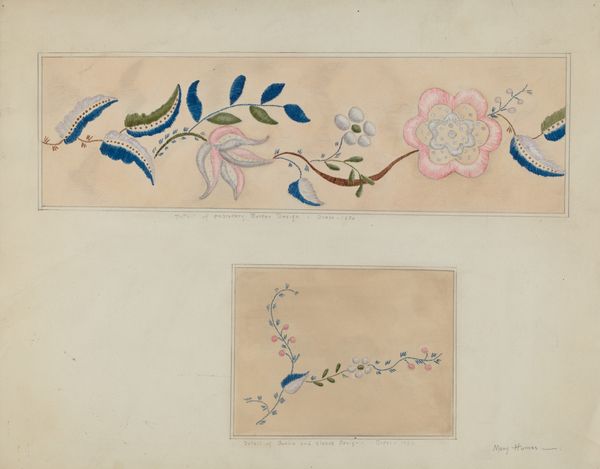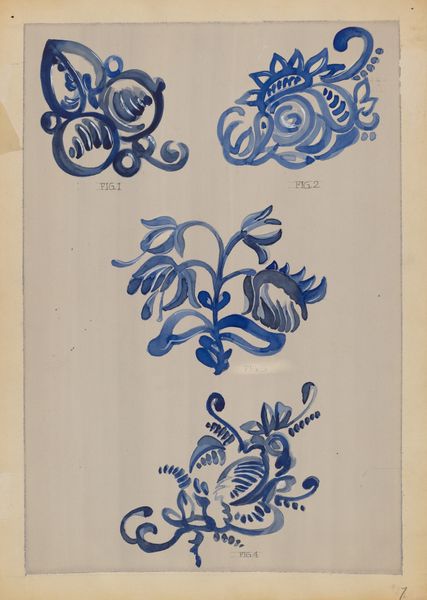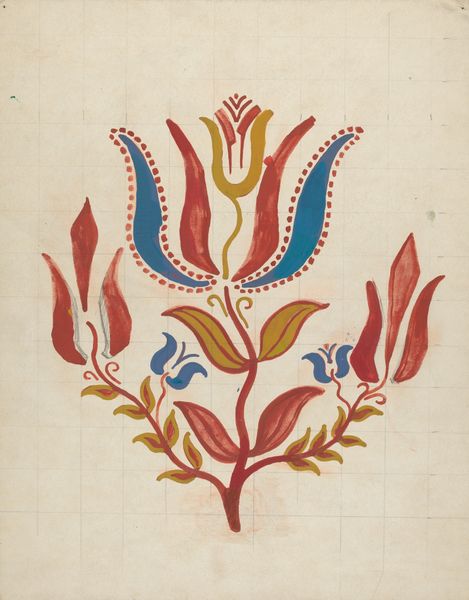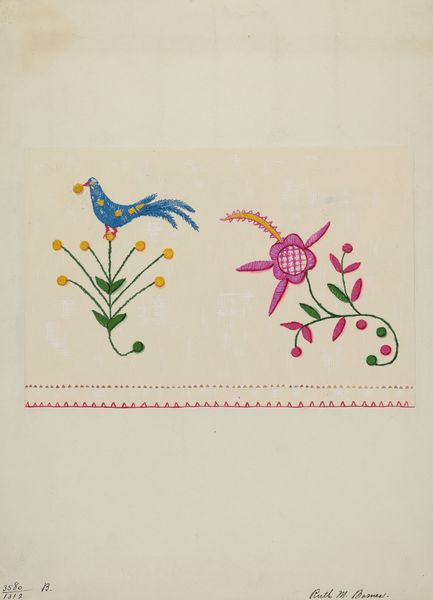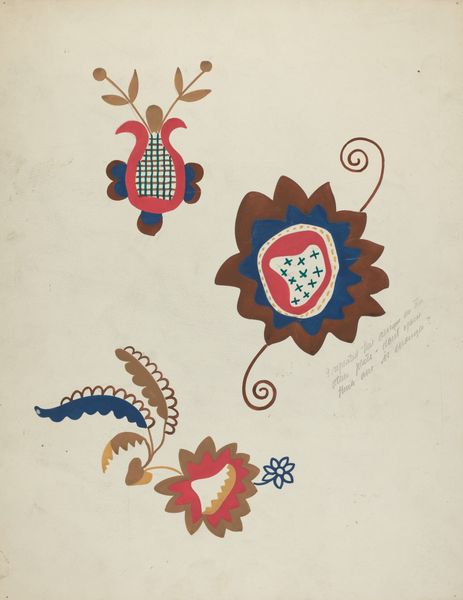
drawing, watercolor
#
drawing
#
figuration
#
watercolor
#
geometric
#
watercolour illustration
#
cartoon style
Dimensions: overall: 46 x 36 cm (18 1/8 x 14 3/16 in.)
Copyright: National Gallery of Art: CC0 1.0
Curator: This is an intriguing watercolor drawing created between 1935 and 1942, entitled "Study for Silkscreen Portfolio," and is by an anonymous artist. Editor: Oh, I love the feeling it evokes—it's almost childlike, with those playful deer and stylized flowers. They look like they could leap right off the page. There is an innocence here and perhaps some whimsy that belies the era. Curator: Exactly, I find myself immediately considering its socio-political context. Think of the Depression-era U.S.—a period of immense social upheaval. Art often served a dual purpose: escapism and social commentary. Editor: You are probably right. The way it blends into some decorative style brings William Morris and his Arts and Crafts aesthetic to mind, I think—albeit in a much different way. The deer, though, seem to vibrate with energy, don't they? Especially the teal one with the red zig-zag. Curator: It's an interesting clash. Geometric abstraction meets figuration here, blending smoothly. These floral patterns might be influenced by the indigenous craftwork as re-interpreted within art and design schools of the time. We must also address how women artists used textiles in unique intersectional expressions of both form and utility, no? Editor: Of course. They feel almost like a glimpse into a dream, and what are those scrawled notes alongside each motif? I suppose we’ll never know to what designs these may relate. Curator: They provide valuable insights into the artistic process itself and they underscore the functionality intended. This could inform the dialogue that design has with labor rights or even craft and resistance throughout history. Editor: You are right! To think these light watercolor shapes might someday find expression printed and repeated onto other materials adds dimension. I look at it differently now. Curator: Indeed. Its strength lies not only in what it depicts, but in what it suggests. The design process can offer insights that can enrich interpretations related to labour, identity, and even commodification. It asks us how the images in this “portfolio” served, and continue to serve, society. Editor: Mmm. And to think these playful drawings would eventually come to bear on a question about function. I hadn’t considered this work as an exercise with serious goals, thank you.
Comments
No comments
Be the first to comment and join the conversation on the ultimate creative platform.
